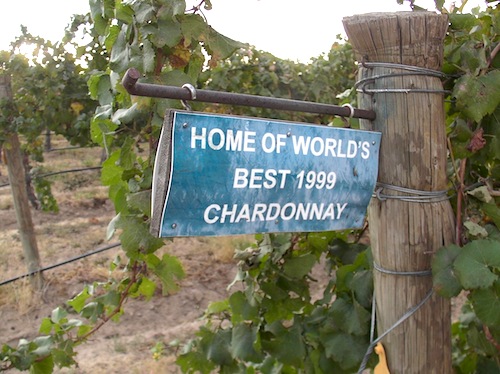
Chardonnay has been at or near the top of the heap in Washington wine country for the better part of 30 years. But how did it get to that position?
The ubiquitous white wine grape’s origins in Washington state are somewhat murky.
According to The Wine Project, Ron Irvine’s superb history of the Washington wine industry, the grape arrived in either 1963 or 1964. Washington State University’s Irrigated Agriculture Research and Extension Center (IAREC) in the Yakima Valley town of Prosser indicates the grape arrived from the University of California-Davis in 1964. But elsewhere in Irvine’s book, it is noted that the stakeholders for Associated Vintners planted Chardonnay – along with several other varieties – in 1963 on Harrison Hill near Sunnyside.
Regardless of which year Chardonnay showed up in Washington, by 1968 only 9 acres were planted in the state, according to records provided by Wade Wolfe of Thurston Wolfe Winery from when he worked at Chateau Ste. Michelle in the 1970s.
In 1968, Al Newhouse planted Chardonnay on his property at the base of Snipes Mountain near Sunnyside. Newhouse, who would later purchase the Harrison Hill vineyard from William B. Bridgman’s family, planted those grapes for Seneca Foods Corp., which was preparing to launch a Washington winery called Boordy Vineyards in Prosser. But by the time the vines began to bear fruit, Seneca no longer wanted the grapes, so Newhouse sold them to a winery in Canada for four or five years, said his grandson, Todd Newhouse.
After that, Associated Vintners, which later became Columbia Winery, contracted the grapes until Chateau Ste. Michelle picked up the contract in the late 1970s. Ste. Michelle purchased the grapes until 2003. The vineyard became badly injured in the epic 1996 freeze that damaged nearly half the vines in Washington’s Columbia Valley. Todd Newhouse eventually pulled out the vines and replanted with Concords.
“We knew it was an undesirable spot,” Todd Newhouse told Great Northwest Wine. “When the state had way too much Chardonnay in 2001 and 2002, that was when one of the contracts came up and didn’t get renewed. We knew it was time for them to go.”
But that 1968 block lives on. In 1979, Al Newhouse wanted to plant more Chardonnay but couldn’t get any plant material.
“It was a last-minute decision,” Todd Newhouse said. “Nobody had any plants.”
So he pruned his 1968 vines and, without using rooting hormone or anything else, simply stuck the sticks in the soil on steep, rocky slopes. Everyone in the industry, including experts at WSU in Prosser, told Newhouse he was crazy and it wouldn’t work. Yet, 95 percent of those vines lived, and that section of his vineyard, now dubbed the “Water Tower Block,” is the best Chardonnay block at Upland Vineyard on Snipes Mountain.
“Nobody thought anything would grow in those rocks,” Todd Newhouse said.
By 1972, Washington had 127 acres of Chardonnay planted. That fell to 112 acres in 1974 but went back up to 194 by 1978. That same year, Chateau Ste. Michelle began planting wine grapes around the Horse Heaven Hills community of Paterson at the future site of Columbia Crest. The company established vineyards at the rate of 500 acres per year, and Wolfe, who oversaw viticultural operations for the company at the time, said at least a few circles were planted to Chardonnay.
Thanks to this, Washington Chardonnay plantings grew to 962 acres by 1982.
By 1985, the U.S. Department of Agriculture began to track Washington wine grape harvest information, including tons crushed and prices per ton. That vintage, a spring frost damaged many vineyards, particularly white wine grapes. Despite that, Washington crushed 2,050 tons of Chardonnay that year, making it the state’s No. 2 grape behind Riesling’s 6,400 tons.
With vineyards recovered from the 1985 frost damage, Washington Chardonnay tonnage nearly doubled in 1986. Then it doubled again in 1987 to 7,500 tons. It and all other varieties dipped in 1991 because of severe winter damage, then Chardonnay cruised above 10,000 tons in 1992 for the first time.
Here are 10 examples of Washington Chardonnay we’ve tasted recently. Ask for them at you’re favorite wine merchant or contact the winery directly.

Leave a Reply